Guest
Guest
 |  Subject: 10 Photos that Prove Megalithic Engineers Predated the Inca Builders Subject: 10 Photos that Prove Megalithic Engineers Predated the Inca Builders  Sun Sep 03, 2017 1:32 pm Sun Sep 03, 2017 1:32 pm | |
| 10 Photos that Prove Megalithic Engineers Predated the Inca BuildersSubscribe via email so that you never miss a postI recently came back from Peru where I was visiting some of the most ancient megalithic marvels on the planet. By megalithic, I am talking about construction that is thousands of years old – some estimate upwards of 10,000 + years old, yet was made with an advanced technology that defies our greatest modern engineering of today.According to author and researcher Brien Foerster, oral tradition states that when the Spanish first arrived in the Cusco area of Peru and beheld the megalithic marvels, they asked the Inca if they had built these super-structures. The Inca’s reply – that they had already been constructed by the time that they arrived.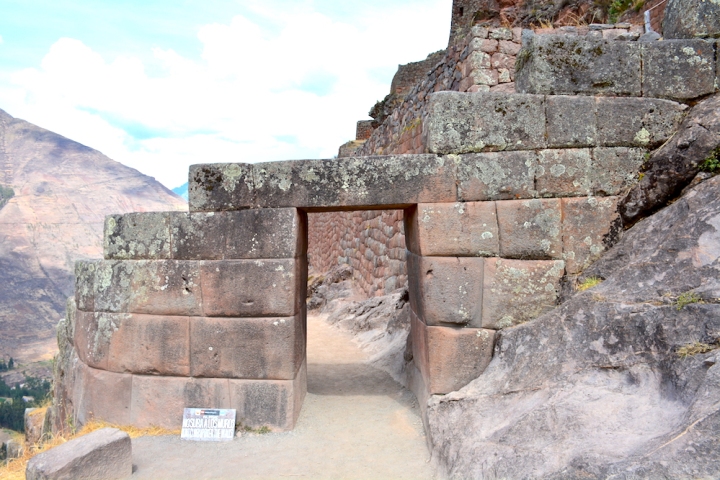 The only tools found in the archaeological record that the Inca possessed to craft stone were bronze chisels and stone hammers. The granite and andesite which the megalithic construction is made of is much harder than bronze. Therefore, the Inca would not have been able to craft these megalithic works. To do so, would be akin to attempting to cut through a tree with a plastic knife. The Inca must then have discovered the megalithic architecture ages after it had suffered through some sort of prehistoric cataclysm and then built on top of it.The Inca construction made of rough stone and clay mortar is beautiful and amazing in its own right, and it is what the majority of tourists pay attention to around Peru, but there is something much, much more ancient and mysterious to see…10 Photographs that Prove Megalithic Engineers Predated the Inca BuildersMachu Pic’chu means “Ancient Mountain.” The shape and style of the ancient megalithic construction there can almost appear to look like something you would see in a futuristic space-age film. Notice the megalithic construction on the left compared with the Inca construction on the right side in the picture below. The only tools found in the archaeological record that the Inca possessed to craft stone were bronze chisels and stone hammers. The granite and andesite which the megalithic construction is made of is much harder than bronze. Therefore, the Inca would not have been able to craft these megalithic works. To do so, would be akin to attempting to cut through a tree with a plastic knife. The Inca must then have discovered the megalithic architecture ages after it had suffered through some sort of prehistoric cataclysm and then built on top of it.The Inca construction made of rough stone and clay mortar is beautiful and amazing in its own right, and it is what the majority of tourists pay attention to around Peru, but there is something much, much more ancient and mysterious to see…10 Photographs that Prove Megalithic Engineers Predated the Inca BuildersMachu Pic’chu means “Ancient Mountain.” The shape and style of the ancient megalithic construction there can almost appear to look like something you would see in a futuristic space-age film. Notice the megalithic construction on the left compared with the Inca construction on the right side in the picture below.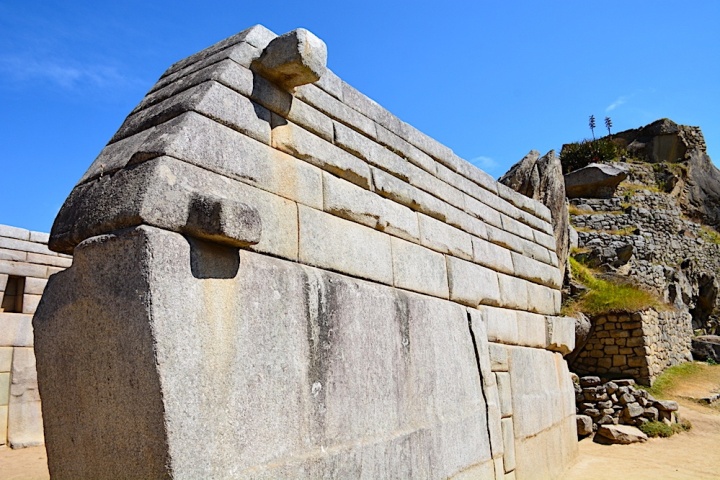 Notice below the striking difference between the Inca wall on the right versus the superior megalithic wall on the left at Machu Pic’chu. Notice below the striking difference between the Inca wall on the right versus the superior megalithic wall on the left at Machu Pic’chu.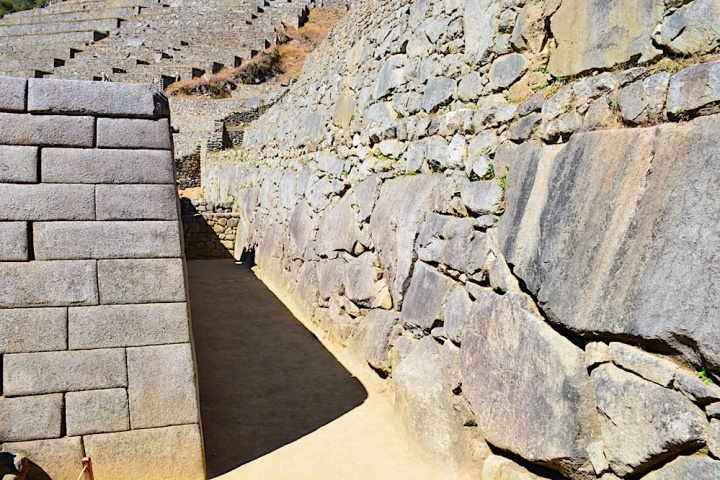 Notice the two very different forms of construction at the Inti-Punku “Sun Gate” that features the much older precision megalithic architecture on the bottom and the smaller inferior Inca construction above. Notice the two very different forms of construction at the Inti-Punku “Sun Gate” that features the much older precision megalithic architecture on the bottom and the smaller inferior Inca construction above.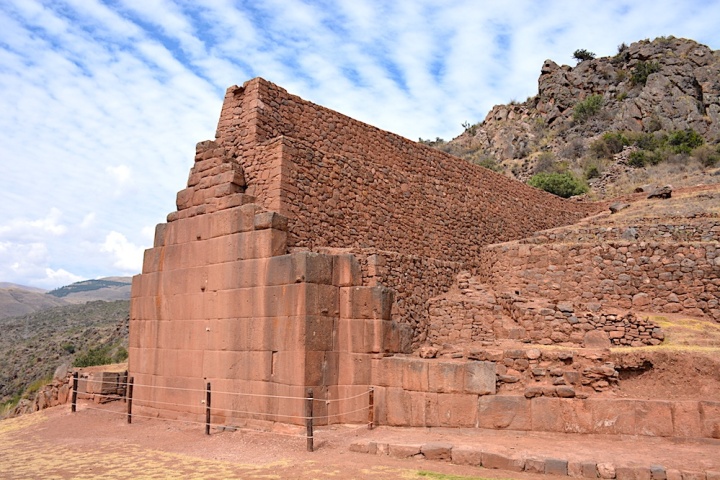 Cusco might be one of the very few major cities in the world that display megalithic construction downtown. This picture below clearly displays the megalithic megaton mortarless stonework on the bottom, then the rough stone Incan construction on top of it, with the Spanish construction on the very top. Cusco might be one of the very few major cities in the world that display megalithic construction downtown. This picture below clearly displays the megalithic megaton mortarless stonework on the bottom, then the rough stone Incan construction on top of it, with the Spanish construction on the very top.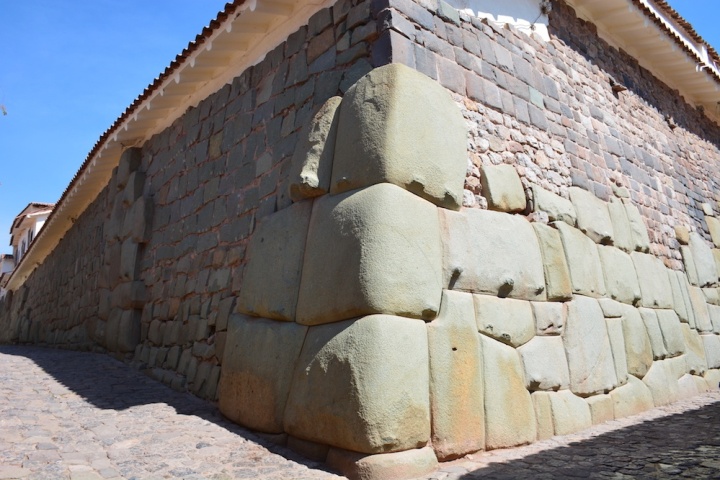 Notice the precision cut megalithic doorway near the Coricancha Museum below with the rough stone Inca construction surrounding it. Notice the precision cut megalithic doorway near the Coricancha Museum below with the rough stone Inca construction surrounding it.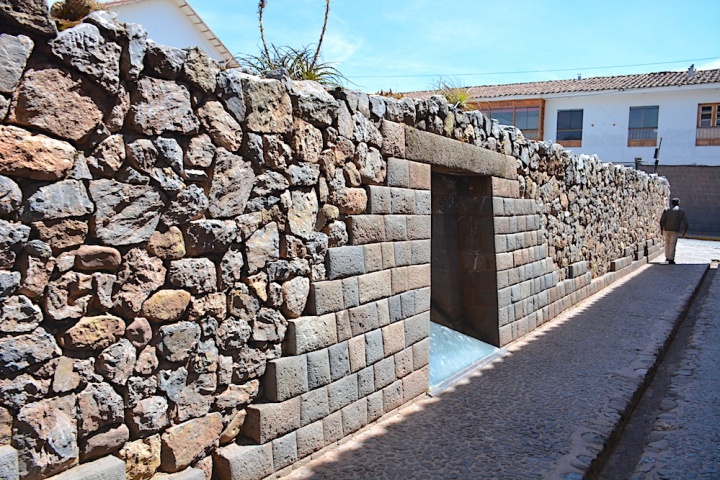 Tipon is the Inca word meaning “Water Temple.” All I knew about this site upon entering it was that it was solely an Inca agricultural mezzanine, but as I looked closer, I learned there was so much more to it. In this picture you can see the megalithic-made water fountain contrasted with the loose-rock Inca construction above it in the background. Tipon is the Inca word meaning “Water Temple.” All I knew about this site upon entering it was that it was solely an Inca agricultural mezzanine, but as I looked closer, I learned there was so much more to it. In this picture you can see the megalithic-made water fountain contrasted with the loose-rock Inca construction above it in the background.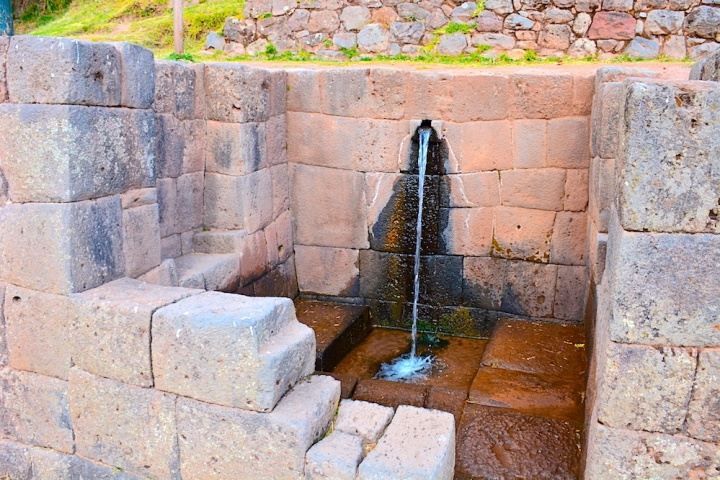 Peru’s largest archeological site is “Ollantaytambo” seen in the photo below. If the Inca had crafted the megalithic stonework as conventional archeologists say, then why wouldn’t they have connected these megalithic blocks together instead of filling the gaps in with small rocks? Peru’s largest archeological site is “Ollantaytambo” seen in the photo below. If the Inca had crafted the megalithic stonework as conventional archeologists say, then why wouldn’t they have connected these megalithic blocks together instead of filling the gaps in with small rocks?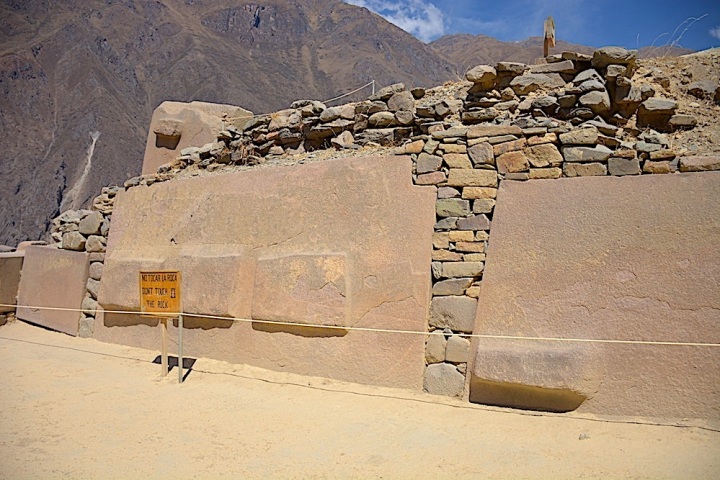 Notice the megalithic trapezoidal door below at Ollantaytambo with the rough stone and clay mortar construction of the Inca above it. Notice the megalithic trapezoidal door below at Ollantaytambo with the rough stone and clay mortar construction of the Inca above it.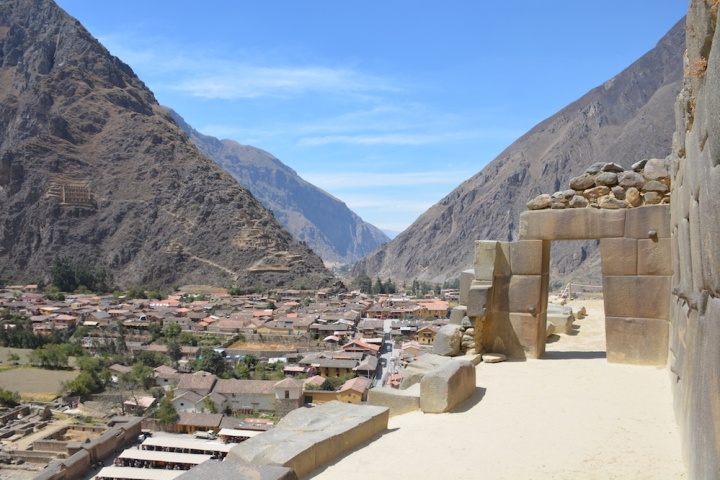 Lying north of Cusco sits the fortress of Saqsaywaman that is made of andesite walls that consist of interlocking blocks with the largest stones weighing as much as 125 tons. Each foundational stone goes about twelve feet underground, making the walls earthquake-proof. Notice the rough Inca stone and clay mortar above compared to the mortarless megalithic stones below. Lying north of Cusco sits the fortress of Saqsaywaman that is made of andesite walls that consist of interlocking blocks with the largest stones weighing as much as 125 tons. Each foundational stone goes about twelve feet underground, making the walls earthquake-proof. Notice the rough Inca stone and clay mortar above compared to the mortarless megalithic stones below.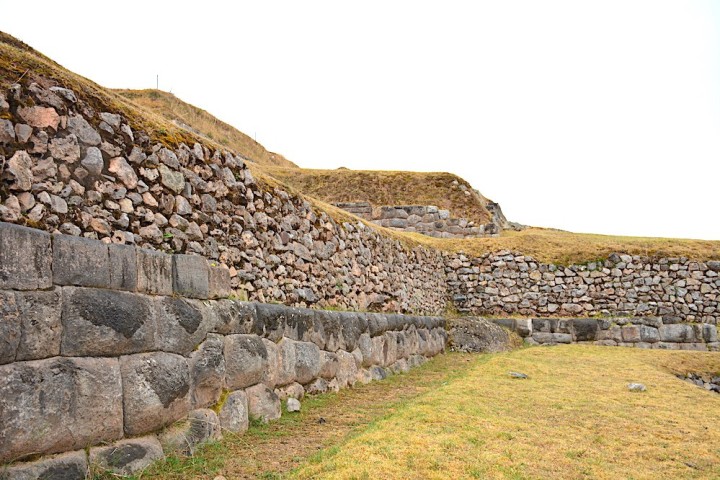 Q So who were these megalithic master builders? Q When did they build? Q How did they build? Q What ancient cataclysm destroyed their fortresses (World-wide flood)? Q Where did they go? Q So who were these megalithic master builders? Q When did they build? Q How did they build? Q What ancient cataclysm destroyed their fortresses (World-wide flood)? Q Where did they go? |
|





